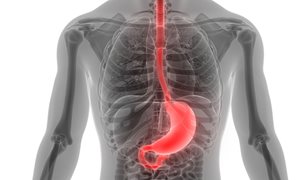 In Clinical Gastroenterology and Hepatology Peter Siersema and Yonne Peters, theme Tumors of the Digestive Tract, showed that patients with stable persistence of non-dysplastic Barrett’s esophagus have a low risk of malignant progression and may not benefit from routine endoscopic surveillance.
In Clinical Gastroenterology and Hepatology Peter Siersema and Yonne Peters, theme Tumors of the Digestive Tract, showed that patients with stable persistence of non-dysplastic Barrett’s esophagus have a low risk of malignant progression and may not benefit from routine endoscopic surveillance.
ABSTRACT
Background and aims:
The risk of esophageal adenocarcinoma (EAC) in patients with non-dysplastic Barrett's esophagus (NDBE) is low, so there is debate over the role of ongoing surveillance for patients with NDBE. It is important to identify patients at low risk for progression. We assessed cancer risk based on the subsequent number of endoscopies showing persistence of NDBE in a nationwide study in the Netherlands.
Methods:
In a population-based study, patients with a first diagnosis of NDBE were selected from the Dutch nationwide registry of histopathology. We calculated incidence rates and incidence rate ratios (IRR) for high-grade dysplasia (HGD) and EAC to determine whether the number of endoscopies negative for dysplasia and the persistence of NDBE over time associate with progression to malignancy.
Results:
We identified 12,728 patients with NDBE during 2003 and 2013. HGD or EAC developed in 436 patients (3.4%) during 64,537 person-years of follow up (median, 4.9 years). The rate of progression to HGD or EAC was 0.68 (95% CI, 0.61-0.74) per 100 person-years. In patients with 2 consecutive endoscopies showing NDBE, the rate of progression to HGD or EAC decreased to 0.55 (95% CI, 0.46-0.64) per 100 person-years (IRR 0.72; 95% CI, 0.60-0.87). Overall, the incidence of HGD or EAC decreased by 14% for each year of progression-free follow-up (IRR, 0.86; 95% CI, 0.81-0.92).
Conclusion:
In a population-based study in the Netherlands, we found patients with stable NDBE to have a low risk of progression to HGD or EAC. These findings indicate that surveillance intervals might be lengthened or even discontinued in subgroups patients with persistent NDBE
Publication
Incidence of Progression of Persistent Non-Dysplastic Barrett's Esophagus to Malignancy.
Peters Y, Honing J, Kievit W, Kestens C, Pestman W, Nagtegaal ID, van der Post RS, Siersema PD.
Related news items

Electronic nose smells precursor of oesophageal cancer
5 March 2020 A portable electronic nose can effectively detect precursors of oesophageal cancer, reported by RIHS researchers Yonne Peters and Peter Siersema in the medical science journal GUT. This was demonstrated in an initial study involving more than four hundred patients. go to page
Mohrmann Stipend for Bakker and Peters
12 December 2019 Tuesday 10 December, Esmée Bakker and Yonne Peters were awarded a Christine Mohrmann stipend. The grant – 5000 euros each – gives them an opportunity to spend time at another university, preferably one abroad. go to page
Electronic nose detects bacterium that can cause stomach cancer
10 September 2019 OP Oost promotes innovative cooperation between companies and research institutions. go to page
Barrett oesophagus
6 June 2019 In Nature Reviews Disease Primers Yonne Peters and Ali Al-Kaabi provided a global overview of Barrett oesophagus and outlined key open research questions. This primer covered epidemiology, disease mechanism, diagnose, screening, prevention, management, and quality of life. go to page
How to approach a patient with refractory or recurrent benign esophageal stricture
31 January 2019 In Gastroenterology Peter Siersema described the currently used treatment modalities for complex esophageal strictures, based on underlying cause and symptom duration, but also focusing on future treatment perspectives. go to page
